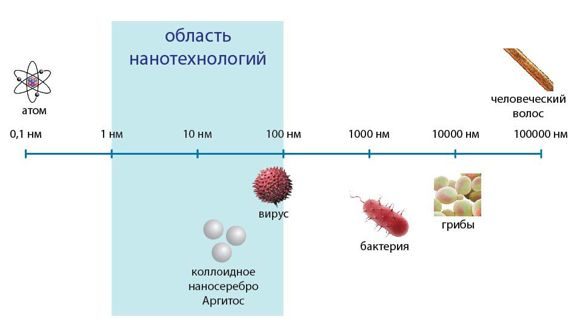Nanotechnology is a modern scientific and technical area of working with matter at the level of individual atoms, which allows for much deeper use of the potential properties of materials and the use of new technologies for most aspects of human life.
Advances in the field of nanomaterials and nanotechnologies open up new opportunities for increasing the technical characteristics of security systems tenfold and are inherently innovative, since they are aimed mainly at creating new products that are in demand by the security system market.
Today, nanotechnology is the most funded scientific field in the world. The influence of nanotechnology is becoming global, changing the economy and affecting all aspects of life, work and social relations.
World science has proven that almost any substance in a nano-sized state acquires new unique properties.
The emergence of new materials with unique properties has always played a major role in the history of civilization, performing not only narrow production functions, but also social ones. It is enough to recall the fundamental differences between the Stone and Bronze Ages, the age of steam and the age of electricity, atomic energy and computers.
The prefix “nano” (from the Greek “nanos” – dwarf) means one part in a billion. One nanometer is one billionth of a meter, the ratio of a nanometer to a meter is the same as the ratio of the size of a penny coin and the globe. In ordinary speech, the prefix “nano” is used to mean “relating to the nanoscale range” or “relating to nanotechnology.”
Comparison of the scales of micro- and nano-objects

Objects of nanotechnology can be both directly nano-sized objects (nanoparticles, nanopowders, nanotubes, nanofibers, nanofilms) and macroscopic objects, the structure of which is controlledly created and modified at the level of individual nanoelements. Devices or systems are considered to be manufactured using nanotechnology if at least one of their main components is an object of nanotechnology, i.e., there is at least one stage of the technological process, the result of which is an object of nanotechnology.
The fundamental difference between nanosized particles and ordinary objects is that the surface area of such particles is extremely large in relation to their volume. Such particles occupy an intermediate position between true solutions and ordinary objects. Their behavior, due to their highly developed surface, is very different from the behavior of true solutions and melts, and objects of the macrocosm. Typically, such effects begin to play a significant role when the particle size is in the range of 1-100 nanometers.
Research methods in the field of nanotechnology
The main methods of research and control of nanomaterials in the field of nanotechnology are transmission and scanning electron microscopy, scanning probe microscopy, dynamic light scattering method, spectroscopy in the ultraviolet and visible light region.
Nanotechnology in the production of nanosilver
The advent of nanotechnology has made it possible to improve “conventional” colloidal silver preparations, reduce the cost of their production, and completely eliminate toxic ionic silver. Nanotechnologies make it possible to obtain nanosized silver particles with a certain, predetermined shape (spherical, plate-shaped, rods, etc.). Research over the last two decades has shown that silver nanoparticles have stronger biocidal properties than conventional colloidal and ionic silver, which makes it possible, without reducing the biocidal properties of solutions, to reduce the total silver content in them.
With the invention of nanotechnology, scientists around the world openly started talking about the return of the “Silver Era.”
Scientists have invented a new revolutionary form of silver – a colloidal solution of nanoparticles, which contains silver in a neutral state, is safe for the human body and is more effective than all its historical predecessors. Thanks to advanced nanotechnological developments, nanosilver has become available for widespread use.
The effective antibacterial area of just one gram of nanosilver can reach several hundred square meters and, under certain conditions, maintain the “bacterial purity” of the treated surface for a long time.
Colloidal nanosilver is the safest and most powerful natural antiseptic for the human body, suppressing more than 650 types of pathogens, including staphylococci, streptococci, dysentery bacteria, typhoid fever, tuberculosis, etc.
The drug actively participates in reducing vital activity and stopping the proliferation of bacteria, viruses, fungi and parasites foreign to the body, and stimulates defense mechanisms. However, it does not affect the friendly microflora of the body. Pathogenic bacteria and viruses die from contact with colloidal nanosilver.

